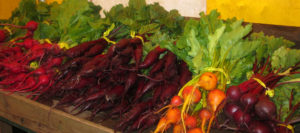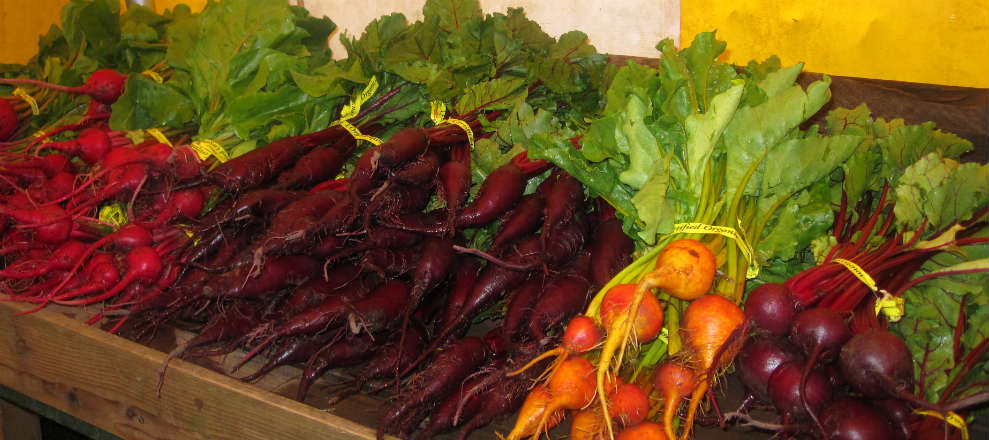I am not a farmer, but care where my food comes from. I read labels to avoid unknown, unintelligible ingredients. I cannot feed myself with my gardening skills. Farmers grow my food and I have the utmost respect for the work the work they do. Each season farmers start anew deciding what and how much to grow. It is always a calculated risk based on years of experience, while not knowing what nature’s forces will bring in the upcoming growing season.
Sustainable agriculture is a term to describe a food growing process that appeals to those whom care about their food choices. Alternatively, agribusiness, the large-scale, commodity-driven, often chemically-induced, pesticide-protected, government subsidized food production beast worries the sustainable agriculture consumers. Examples abound on why to be concerned. Pork production facilities have caused significant environmental damage to North Carolina river ecosystems from leaks from CAFOs–Concentrated Animal Feeding Operations–where multitudes of pigs are treated only as a food source rather than live animals that should be given respect. Food safety calamities with mainstream products such as peanut butter and cantaloupes have caused recalls, sickness and even death and shaken the confidence of our conventional food supply system.
Whether sustainable agriculture is the answer to food safety and environmental concerns is not certain, but I assert that is part of the solution.
Agriculture is…
What is agriculture? According to the Oxford American dictionary, agriculture is “the science or practice of farming, including cultivation of the soil for the growing of crops and the rearing of animals to provide food.” Between 10,000 to 13,000 years ago, our ancestors realized that staying rooted during the growing season meant a more secure food source, than the hunting and gathering existence of their forefathers. Our predecessors developed villages, towns, and eventually cities around soils that bore fruits and vegetables, and reared animals, which were domesticated to provide milk, materials for clothing, casings for sausage, and a multitude of other uses.

Goat basking in the sun at Cloudview EcoFarm–Columbia Basin
Improvements to agriculture practices evolved over the eons with the advent 6,000 years ago of the simple plow and irrigation practices thereby increasing yields. The invention of the wheel about 5,500 years ago, vastly eased product movement from rural lands to population centers and increased city densification and development of a merchant class.
Agriculture continued to evolve and beginning in 1800, during the Industrial Revolution and accelerating in the aftermath of World War II, food production surged and worldwide population skyrocketed to 7 billion people today. (Since my birth, the world’s human population has more than doubled, which is astounding.) A significant part of the population increase is attributable to the vast improvements in food production, which increased yields by using artificially-made pesticides, herbicides, and fertilizers. At the same time, seed stocks were hybridized to strengthen traits that improved transport and storability, increased size, augmented color, and optimized the use of artificial inputs (Roundup® ready seeds for example). For those that support all technological advancements, the increase in food production via agribusiness has been a stellar success.
At the same time there have been losses. Flavor, which is the joy of eating, has been lost with intense hybridization. Rural communities have been emptied, food safety concerns have increased and topsoil continues to be lost. Many assert that agricultural scientific innovation should be tempered with reverence and appreciation for a natural systems ethos to grow food more sustainably.
What is Sustainable Agriculture?
Much has been written by scholars and farming specialists on sustainable agriculture, which is considered a system that is “protective of the environment, economically viable, and social responsible” according to a 2002 Washington State University (WSU) Center for Sustaining Agriculture & Natural Resources (CSANR), Sustainable Agriculture in Washington State publication. The Sustainable Agriculture Research and Education (SARE) program, funded through the USDA’s National Institute of Food and Agriculture, further defines the 3 Pillars of (Farming) Sustainability where there is “(1) profit over the long term, (2) stewardship of our nation’s land, air and water, and (3) quality of life for farmers, ranchers, and their communities.” These are solid, grounded objectives that benefit the common good, but have been largely dismissed by agribusiness.

So many kinds of beets at Nash’s Organic Produce stand
Concurrently, at least 95% of Americans’ food purchases comes from conventionally grown agribusinesses and unfortunately, the common person is just not exposed nor perhaps even interested in other food production methods, let alone alarmed about issues that protect the natural world or support living wages for the farm workers. Furthermore, most people don’t spend a moment ever thinking about where their food comes from, as it just shows up and is easily available, providing no connection or awareness to any problems or potential fragility in the food system.
Why Should it Matter?
Should Americans care where their food comes from? Should they be concerned about how it is grown or whether the farmer is able to make a living wage? Yes! We are fortunate in Washington State to have extraordinary farmers such as Cloudview EcoFarm, Viva Farms, Nash’s Organic Produce, and many more that are growing food sustainably where natural resources are sacred and workers are treated well. However, for all of these farms to be profitable over the long term, the eating public needs to be educated and to support a sustainable agriculture economy.
My question to sustainable agriculture advocates is how do we ignite the eating public to care about where their food comes from? What solutions do you have?
Kathryn Gardow, P.E., is a local food advocate, land use expert and owner of Gardow Consulting, an organization dedicated to providing multidisciplinary solutions to building sustainable communities. Kathryn has expertise in project management, planning, and civil engineering, with an emphasis on creating communities that include food production. Kathryn’s blog will muse on ways to create a more sustainable world. Gardow Consulting can also be found on LinkedIn.


Kathryn, thanks so much for this blog….it really helps to draw in the average consumer! to make it simple so folks can understand…